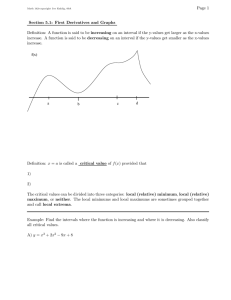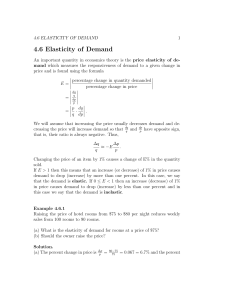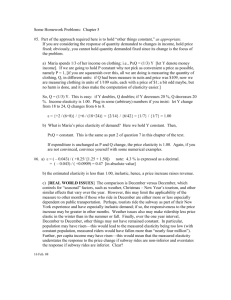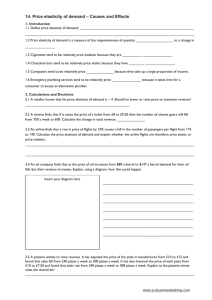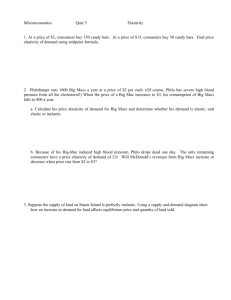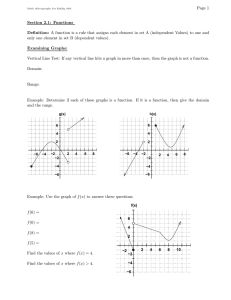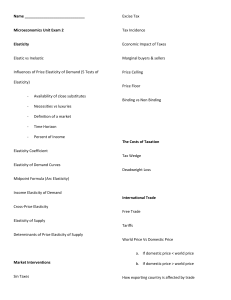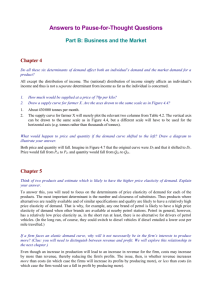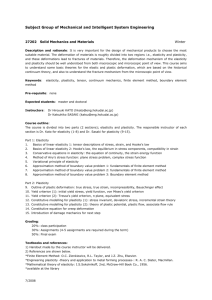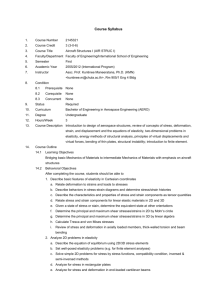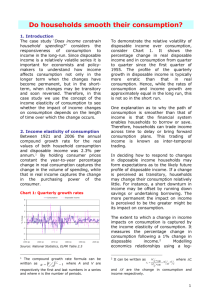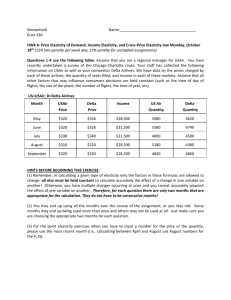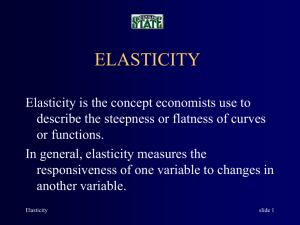Page 1 Section 4.7: Elasticity of Demand Definition: The relative rate
advertisement
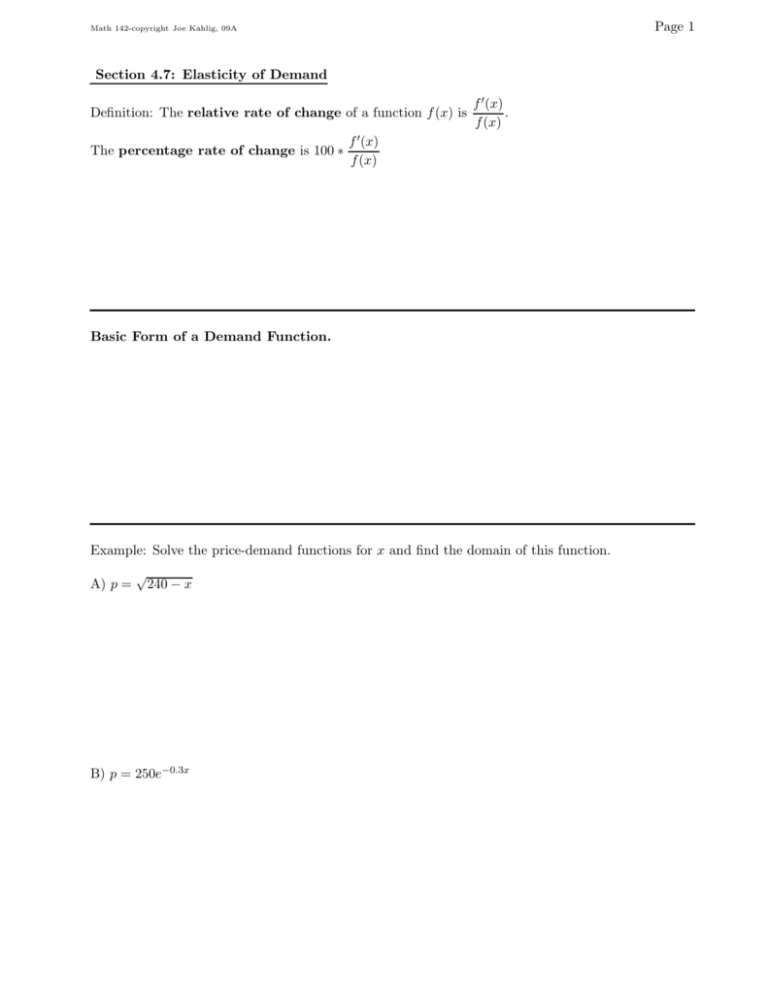
Page 1 Math 142-copyright Joe Kahlig, 09A Section 4.7: Elasticity of Demand Definition: The relative rate of change of a function f (x) is The percentage rate of change is 100 ∗ f ′ (x) . f (x) f ′ (x) f (x) Basic Form of a Demand Function. Example: Solve the price-demand functions for x and find the domain of this function. A) p = √ 240 − x B) p = 250e−0.3x Page 2 Math 142-copyright Joe Kahlig, 09A Definition: Elasticity of demand is a measure of how sensitive the demand is to a change in price. Demand is said to be elastic if a small change in the price produces a larger change in the demand. Demand is said to be inelastic if a small change in the price produces a smaller (or no) change in the demand. Elasticity of demand, E(p), is computed by E(p) = − Relative rate of change of demand Relative rate of change of price demand is 0 < E(p) < 1 E(p) = 1 E(p) > 1 small change in price produces Math 142-copyright Joe Kahlig, 09A Page 3 Example: A company has determined that the demand for a product is given by x = f (p) = 480 − 9p − p2 A) Find the elasticity function. B) Classify the type of elasticity when the price is $15. C) Classify the type of elasticity when the price is $6. D) When the price is $6, if the price is increased by 2%, what would be the approximate effect on demand? E) What price should be charged so that revenue would be maximized? Math 142-copyright Joe Kahlig, 09A Page 4 Example: A company has determined that the demand for a product is given by x = f (p) = 729 − p2 A) Find the elasticity function. B) Suppose that the price is $20. What would be the approximate effect on demand if the price is decreased by $2? C) Suppose that the price is $8. What would be the percent change in demand if the price is changed by $1? D) Find the price where elasticity would be unitary. E) Give the interval where price is inelastic. Give the interval where price is elastic.
